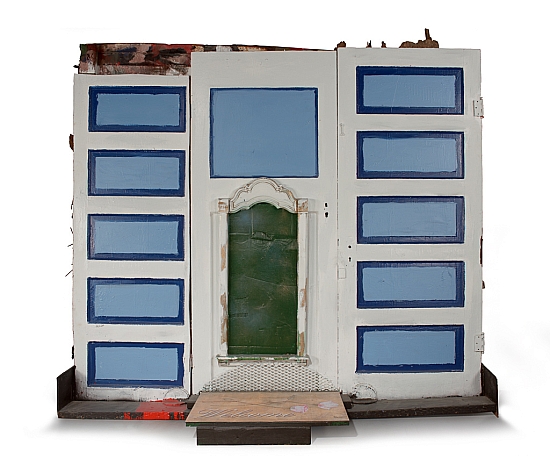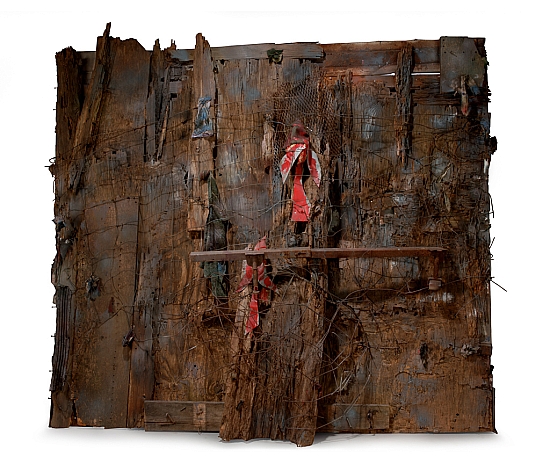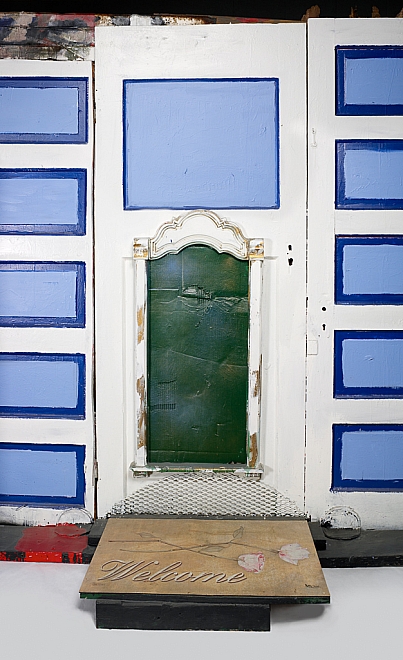This two-sided piece was inspired by the violent resistance to integrated schools and housing launched in Alabama, the home of the notorious segregationist George Wallace and the heart of the region’s xenophobia during the civil rights movement. Painted on the front of the work is an unusually tidy image of a house facade, the highest icon of the American dream. Its front door is money-green, the means of access to America’s promise, with an entry mat that offers the sweet message “Welcome.” But like the opening scene of a horror show, sinister elements soon begin to reveal themselves. A piece of fencing blocks the bottom of the entryway, what has also been dented, as if the site of a past scuffle. Finally, a puddle of blood oozes ominously out on the ground from behind the whitewashed wall, which, when surveyed more closely, is itself constructed of three old doors with locks.
On the backside of Peckerwood City, Dial’s dream house has turned into a nightmare of decay and decrepitude. Its walls, now rotting, have been picked apart and destroyed by two peckerwoods. “Peckerwood” is black Southern slang for the loud and troublesome redheaded woodpecker and a derogatory term for white people. Here the birds are painted the blood red of violence and death. Shaped to resemble hooded clansman, they are the destructive forces of racism made manifest, dart agents of the most hateful, obscene part of human nature and the true incarnation of the abject. Surviving their aggressions is the nearby fragment of a testy bed frame that signifies the tenacious pursuit of a home—a place, however fragile and tenuous, to rest one’s head. The tangled grid of mattress wires and other fencing are the economic and social strictures that have so often denied black people a sense of someplace. Describing the piece, Dial confessed, “This is the house I tried to build myself.”
Dial had created only a few two-sided pieces like Peckerwood City, but the binary construction is essential here, for it expresses the duality of American idealism and its dark failures. It is the literal facade of white middle-class normalcy poised against the realities of the racist pathology too often lurking behind it. Holding up a a mirror to the grotesque and disfiguring nature of racist oppression, Dial uncloaks the malevolence that masquerades as white moral rectitude. And with this image, he projects back onto its source the portrait of the abject that has been historically imposed on black people. In the end, Peckerwood City is a study of self-corrupted humanity, a piece that asks a question about the effects of oppression on the oppressors or, in the words of Toni Morrison, “what racial ideology does to the mind, imagination and behavior of masters."


